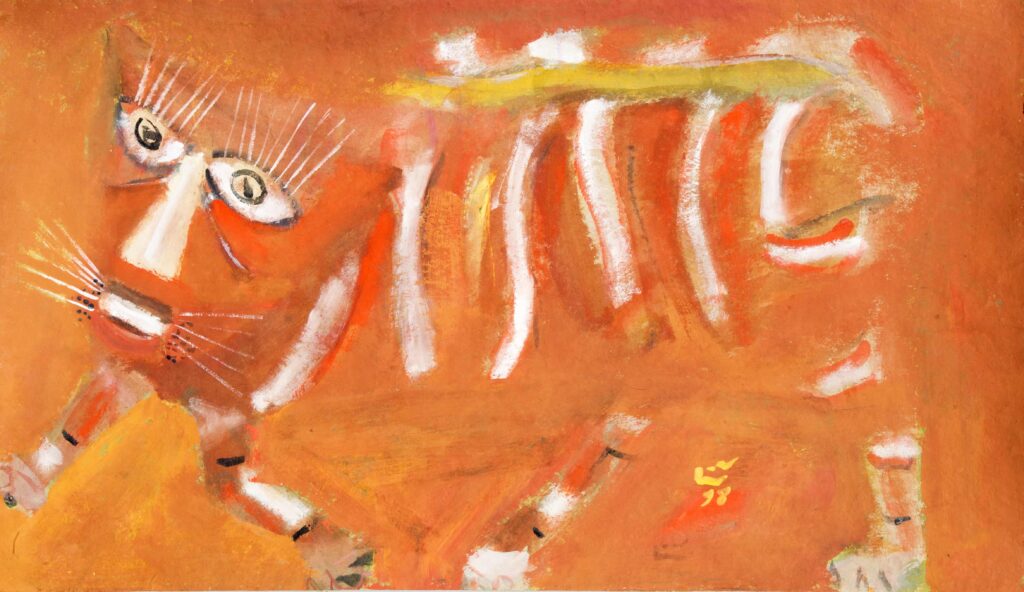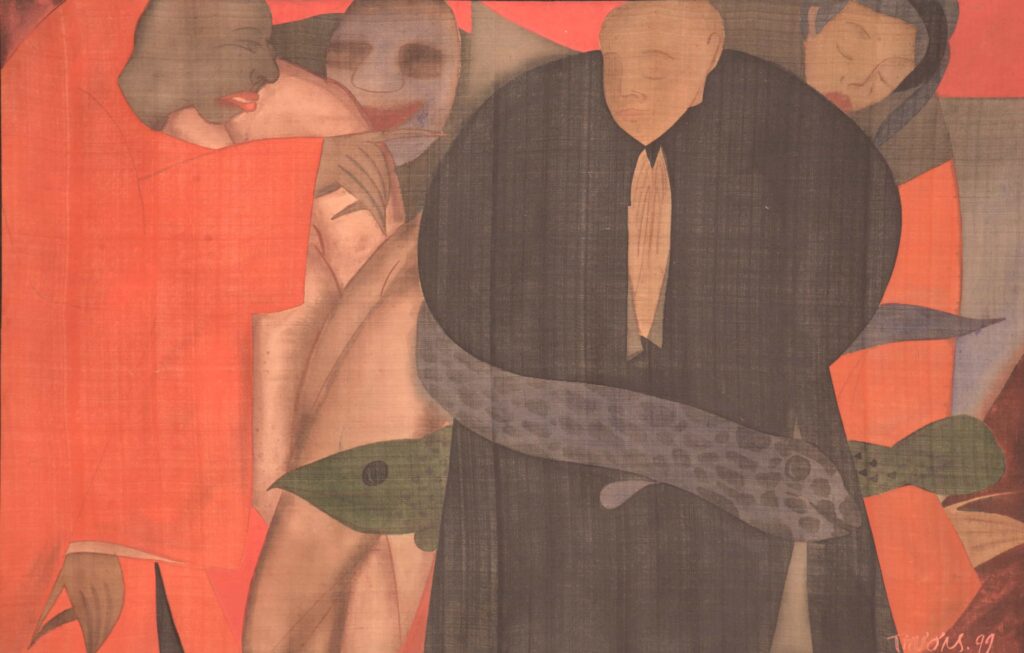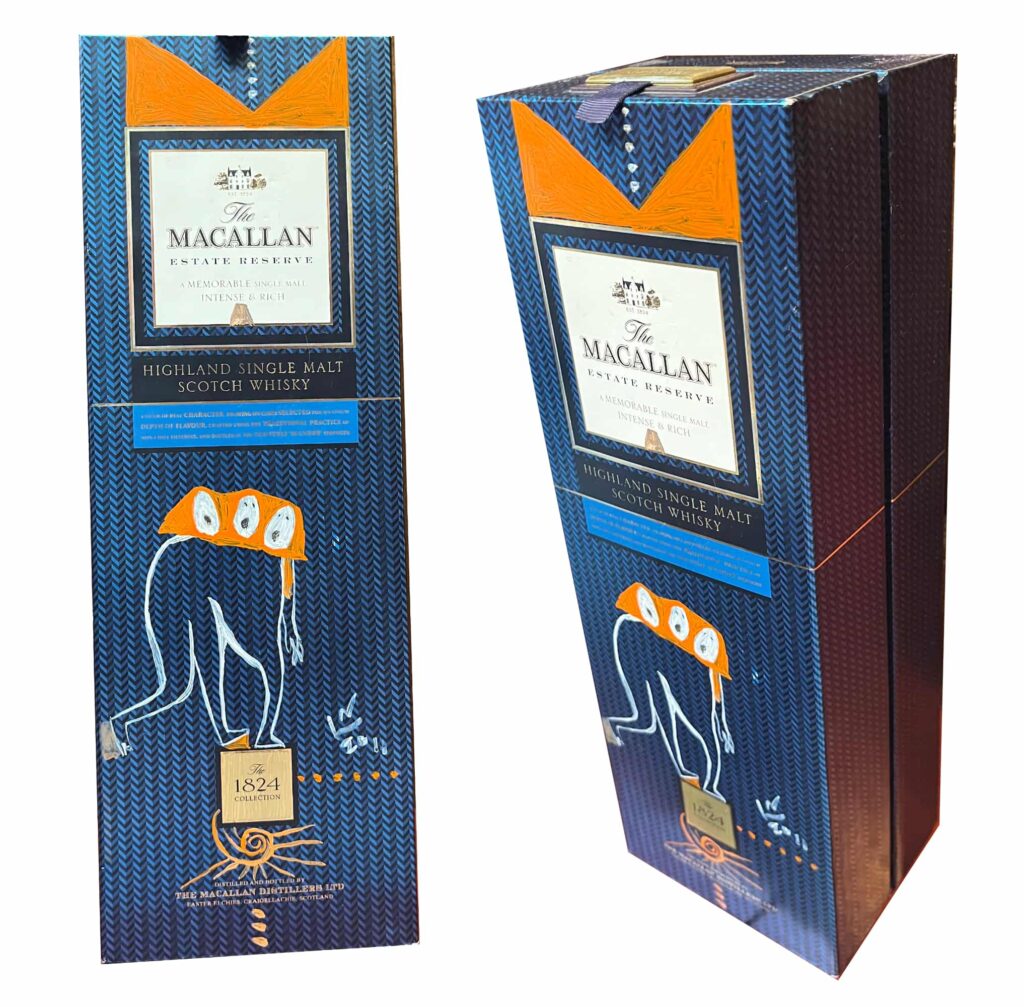In this Article
ToggleThe presence of these women’s influence in the collection not only acknowledges their individual artistic value but also marks significant milestones in the development of Vietnamese art.
The Role of Female Artists in Vietnamese Art
Inspired by the 2014 exhibition “A Woman’s View”, co-organized by the Goethe-Institut Hanoi and Art Vietnam Gallery, this essay seeks to re-examine the role and imprint of prominent female artists in The Lecht Collection. The presence of these women’s influence in the collection not only acknowledges their individual artistic value but also marks significant milestones in the development of Vietnamese art.
Rural Life and Emotional Expression
In works created before the 2000s, the dominant theme is landscape – a choice that appears almost inevitable. Not only is landscape an accessible subject for viewers, but it also conveys humans’ multifaceted inner emotions while simultaneously expressing the beauty of nature. For instance, in “The Village Gate” by Do Thi Ninh, the work reveals a dreamy, gentle countryside palette. Though centred on a familiar motif, the composition and color harmony in “The Village Gate” breathe new life into the traditional. The silhouettes of young women, graceful in their pure white ao dai, heighten the tranquil essence of rural life. The dusk in the girls’ footsteps, the dusk around the village gate, and the dusk resting on the tiled roofs seem to exist separately, yet are interwoven. The towering old tree spreads its branches across the sky, shielding the earth from sunlight. Dominated by hues of orange and green, the entire scene comes together in a subtly surreal tableau that departs from the usual gentleness of the countryside.
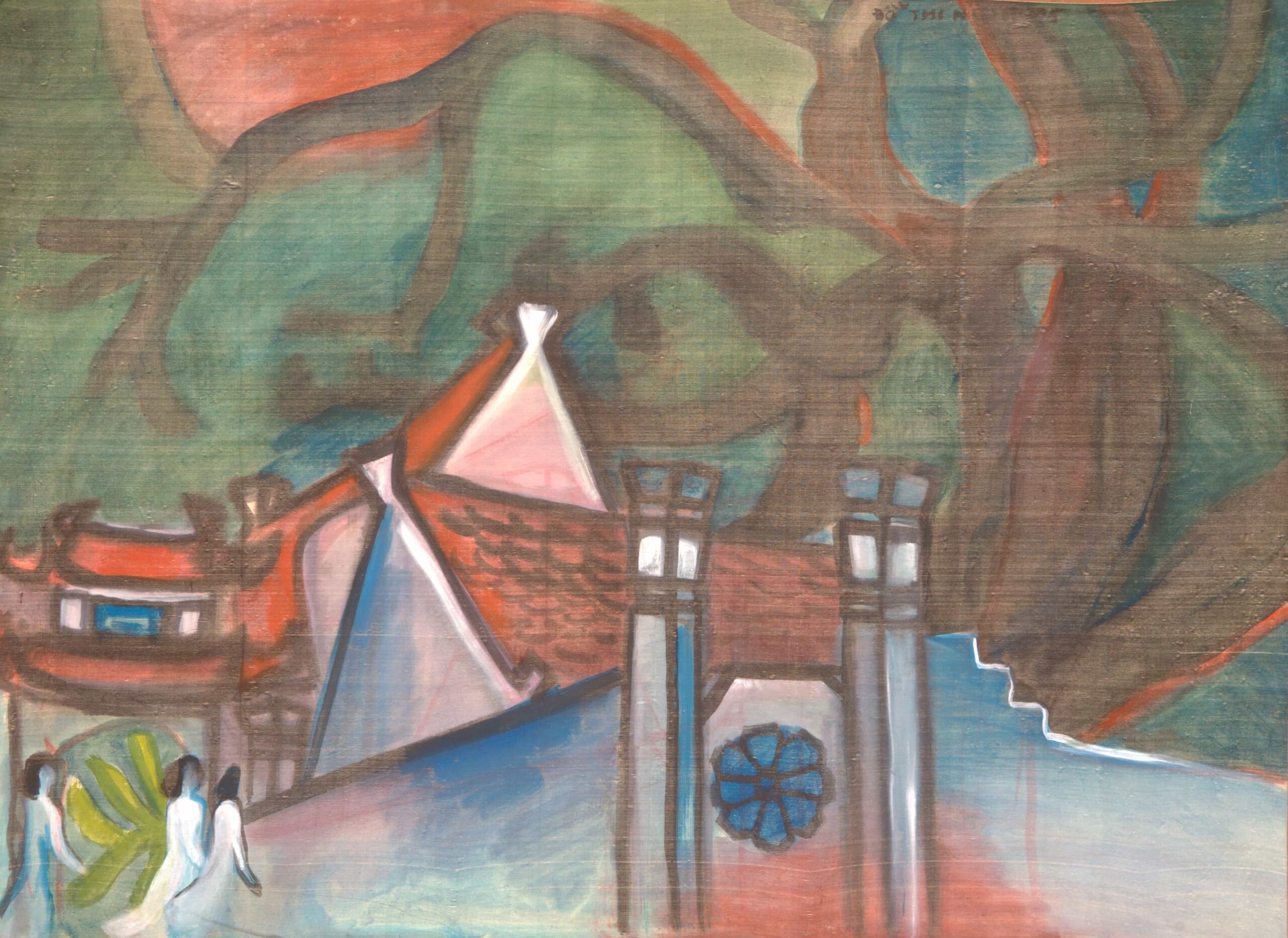
In Ta Thi Thanh Tam’s “Going to the Pagoda”, there is a sense of serenity and rustic simplicity. Departing from realist representation, the figures are rendered using basic shapes such as circles and arches. The subjects are arranged in small clusters – some walking alone, others in groups. The monks are depicted with minimalist detail: hunched postures, darting glances, expressions tinged with bewilderment and estrangement from the world around them.
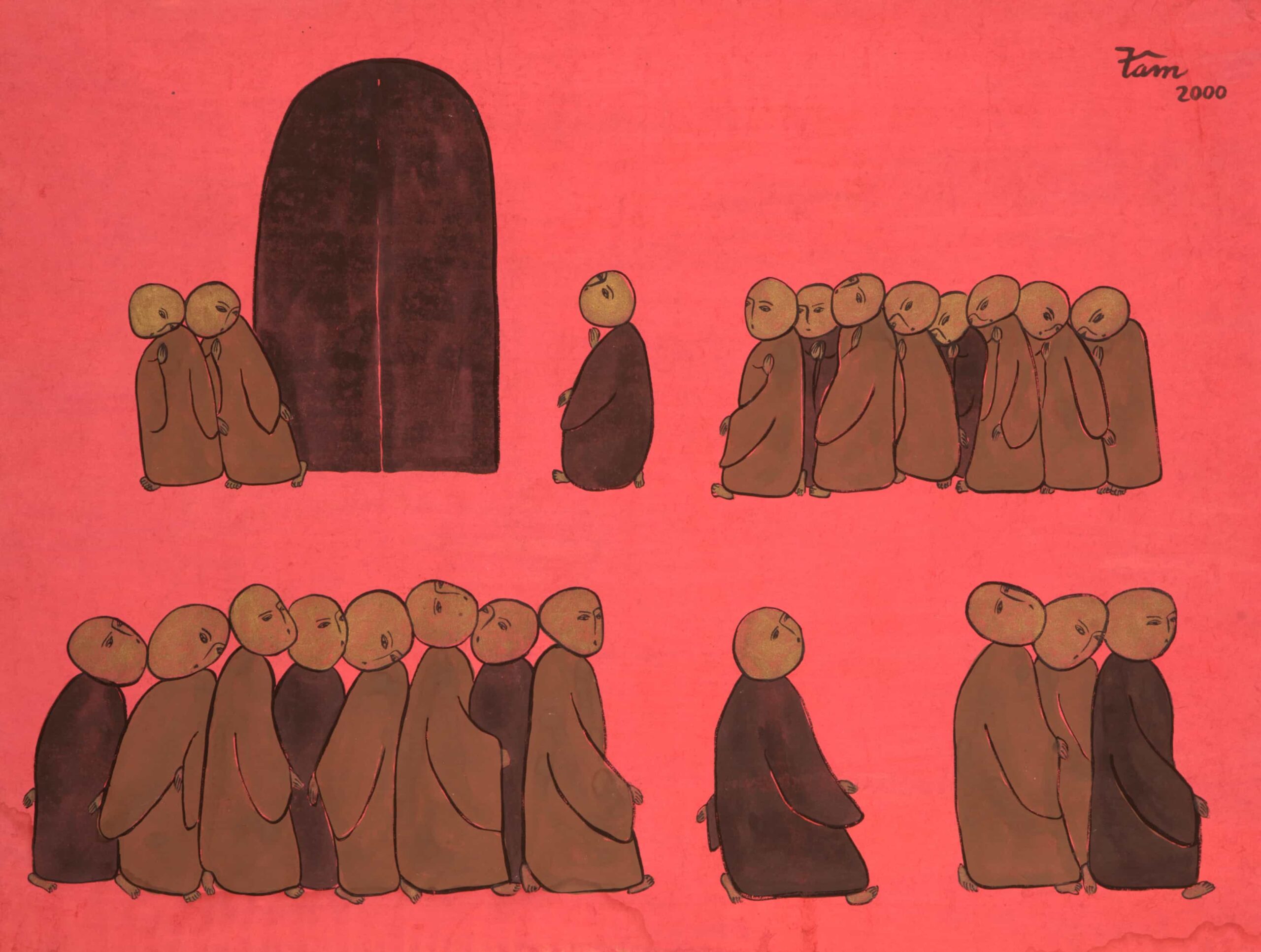
Women’s Struggles and Social Commentary
Following the transitional period of the 1990s into the early 2000s, works by female artists began to emerge with greater force, engaging with themes centred on both personal and collective narratives.
With Chau Giang, her work is forthright and unflinching in its expression of layered emotional states – at once joyful, yet tinged with torment and sorrow. She lays bare the struggles and constraints faced by women in their roles as wives, mothers, and daughters-in-law; sentiments of hurt, disappointment, and quiet despair recur throughout her practice. In My Love, Chau Giang presents an intimate moment between two figures, where joy intertwines with entrapment: strands of thorny twine wrap around the woman’s feet, while a chain in the form of a man encircles her neck. The nakedness of the figures suggests a vulnerability and exposure of private emotion. In the background, the foliage bears tearful eyes, symbolizing the profound sorrow a woman can only express in silence.
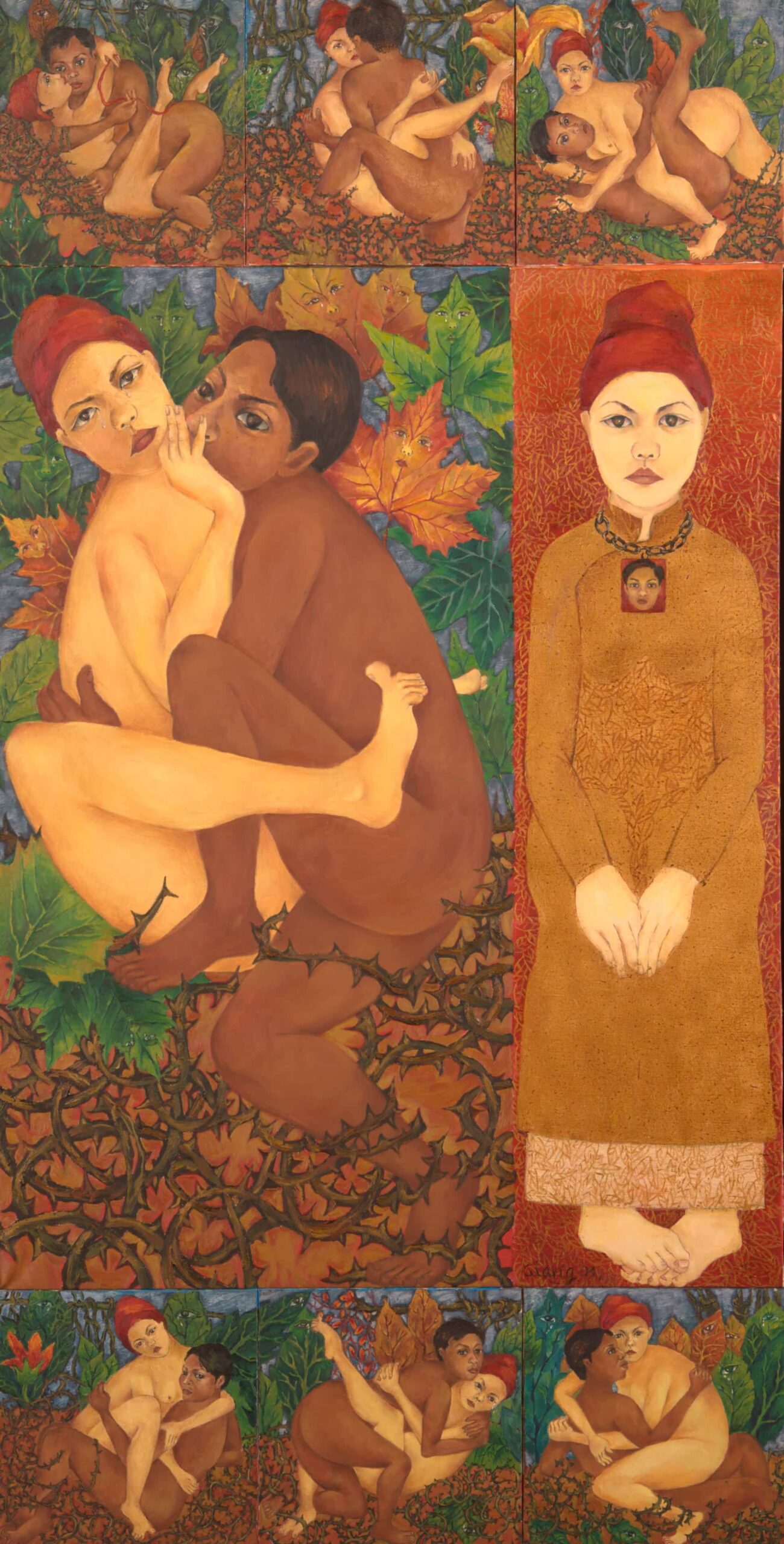
The work of Dinh Thi Tham Poong possesses a universal, global sensibility. Humans, especially women, appear in anonymous, almost indistinct forms. Through repeated motifs and patterns drawn from ethnic textiles, her figures merge seamlessly with nature, flickering in and out of view like chameleons. This blending into the natural world speaks to a symbiotic relationship, reflecting the daily life of highland communities where nature and people coexist as parallel entities in a space where humanity does not reign supreme. More than that, Tham Poong’s work also carries a subtle critique of the dilution and Westernization of ethnic and national values – a trend that was emerging in the post-Renovation era.
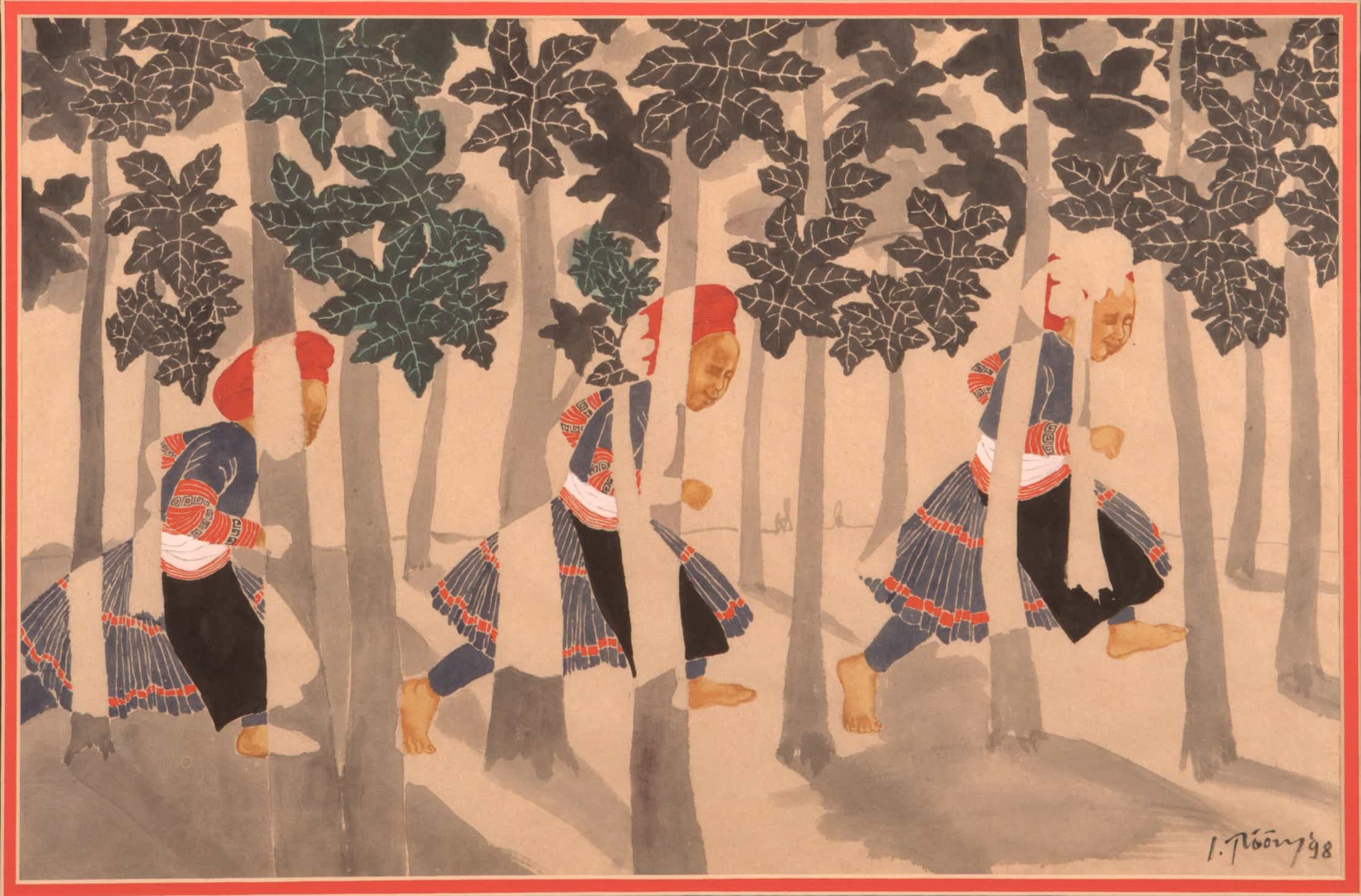
Raw Feminine Identity in Contemporary Art
Dinh Y Nhi’s works are visually restrained, yet emotionally dense. Rather than depicting women through conventional ideals of feminine beauty or the expected use of soft, pastel palettes, Dinh Y Nhi remains resolutely committed to her stark aesthetic. The women in her paintings often exude a wild, untamed presence. Their bodies are rendered in slender, angular lines, devoid of softness or sensual curves. Their facial expressions are usually intense, at times fierce, with wide-open mouths that seem to release a silent, inner scream.
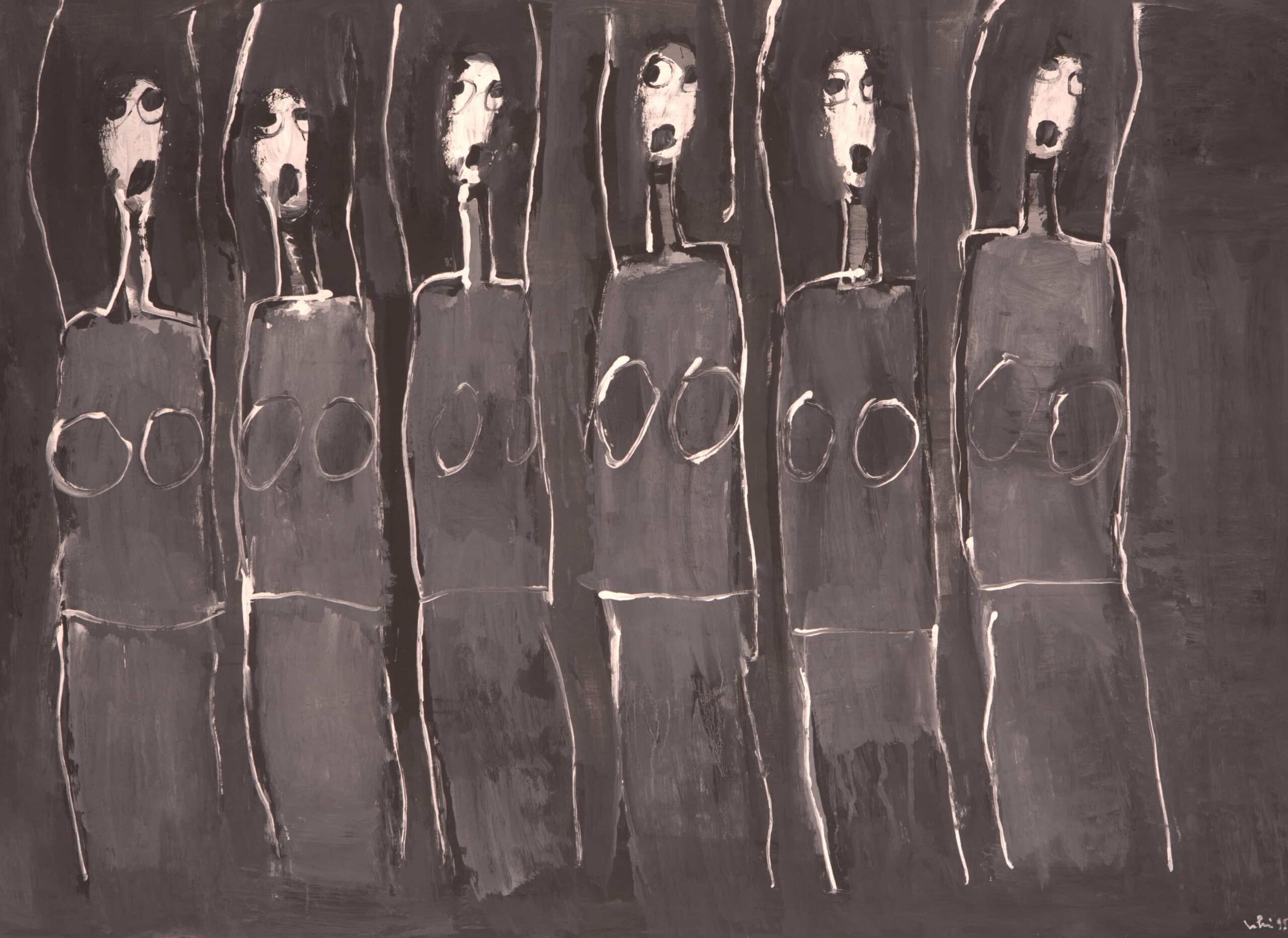
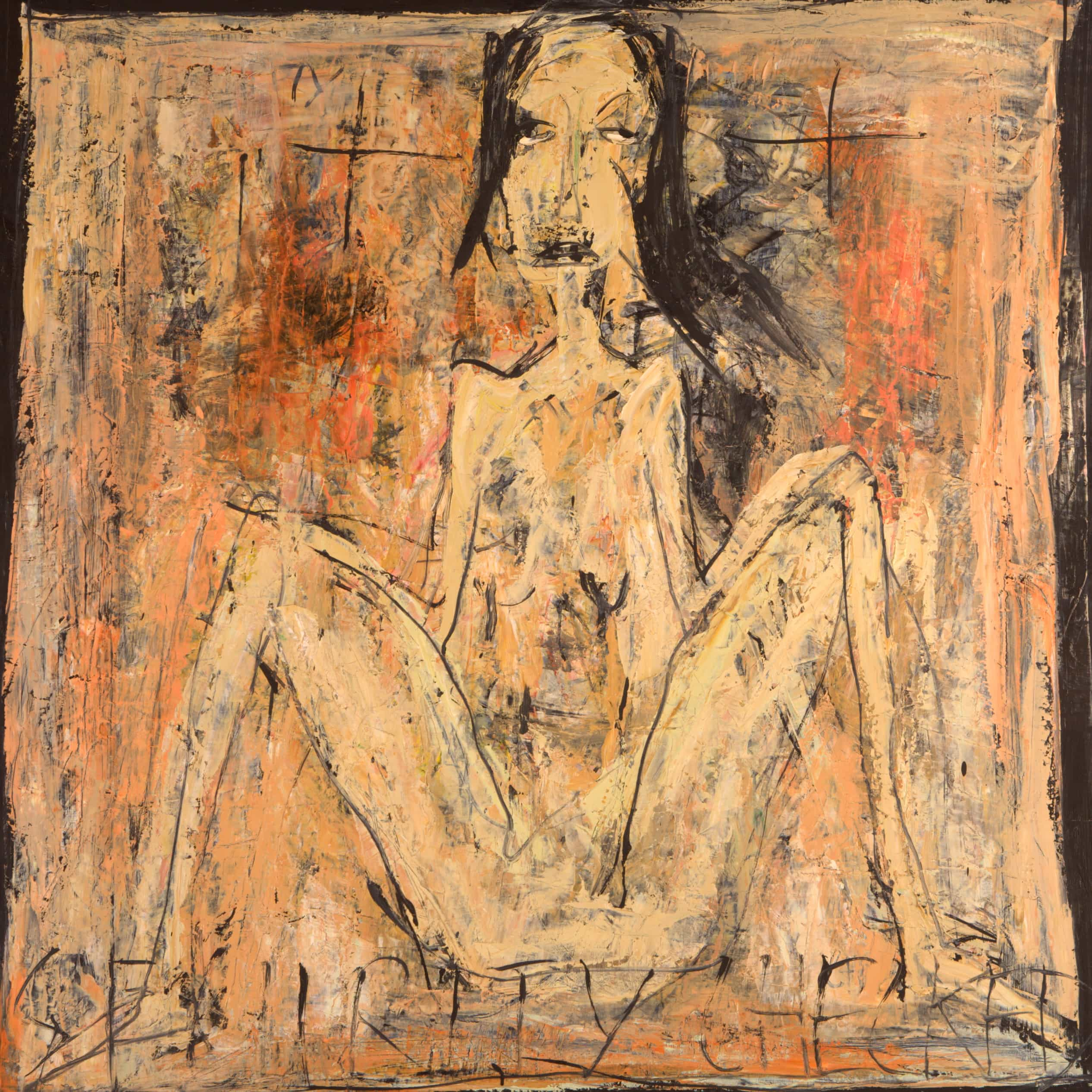
Her work is raw, perhaps even difficult to view for some. In one piece, the words “Security Checked” allude to a search or violation, both physical and psychological. The nude female figure, legs spread, face drained of energy, evokes a profound sense of helplessness and resignation. The characters in Dinh Y Nhi’s paintings often appear parched, emotionally and spiritually, as their stories are laid bare under the harsh light of scrutiny.
Redefining Feminine Strength and Self-Expression
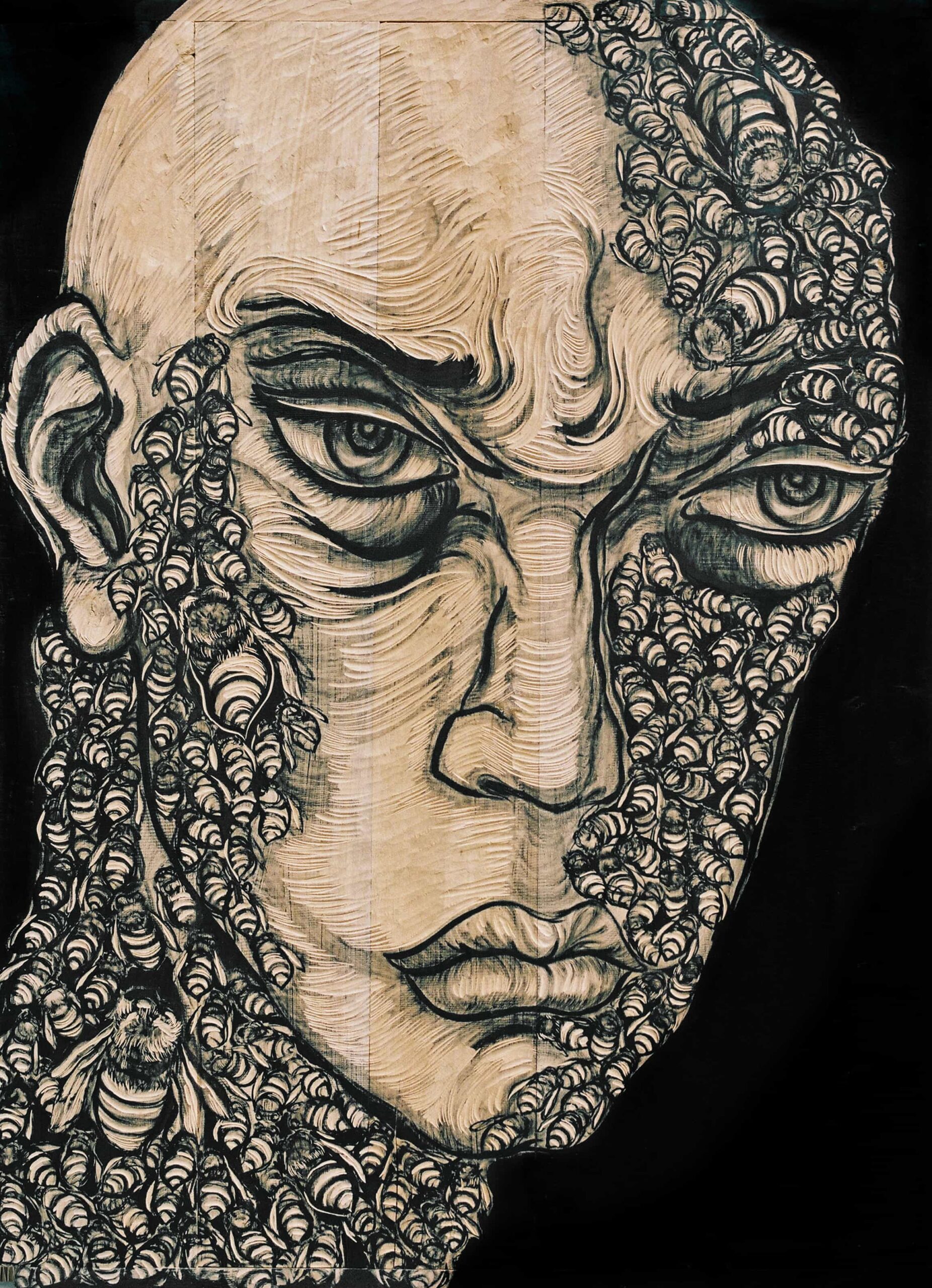
Continuing the quiet melancholy and emotional estrangement found in earlier works, Ly Tran Quynh Giang often conveys a sense of psychological detachment through her self-portraits. Characterised by woodblock printing and oil on canvas, the figures in her paintings exude a cold, contemplative presence. In “Sleeping Season I”, the character’s face becomes a symbiotic host for a swarm of bees; her brow is slightly furrowed, her eyebrows drawn together. The figure resembles a tree trunk, serving as shelter for a collective. This image becomes a metaphor for dependency and endurance. The artist has spoken frequently about her exploration of the concept of “vong thân” (self-forgetting) – the dissolution of the self in the pursuit of higher values in life – in her practice. The subjects in her work appear solitary, absorbed into their surroundings or drifting through imagined, liminal spaces.
Phi Phi Oanh, by contrast, offers a bold visual approach in her work “Armor”. Through the act of casting an armor mould directly onto her own body, she creates an image that is both powerful and intimately feminine, emphasizing the curves of the female form.
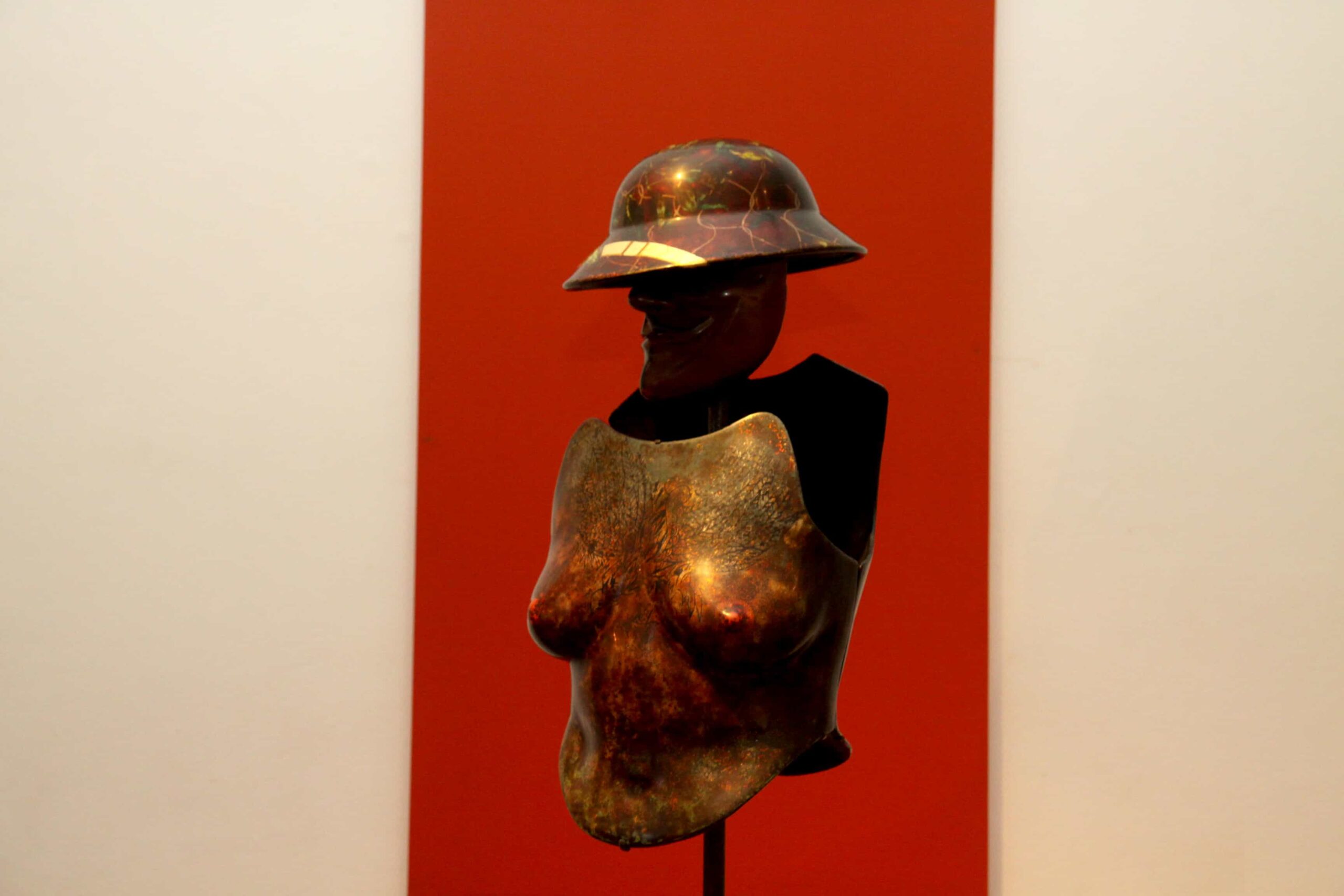
The juxtaposition of armor, a symbol of defence and strength, with the female body, rendered in the traditional medium of lacquer, provokes reflection on identity and burden. Specifically, it questions the roles often ascribed to women as mothers and caretakers, while simultaneously opening new narratives within lacquer – a medium known for its layered surfaces and historical associations with buried memory and landscapes shaped over time.
Each artist’s journey is singular, yet the feminine reveals itself naturally within their practices. In each approach, the viewer is offered a glimpse – not only into stories about women – but also into specific contexts and the deeply personal concerns of each artist.

 Tiếng Việt
Tiếng Việt
